Francolin: Ug99-tolerant wheat variety released in Bangladesh
The danger posed by the Ug99 strain of the disease stem rust to global wheat production is well recognized, and Bangladesh is no exception. Wheat is one of the major cereals in Bangladesh, ranking second after rice with a cultivated area of 0.38 m ha and average yield of 2.6 t/ha. In a major step in countering the disease threat, a new wheat variety, named Francolin, was released on 06 March 2012. Also known as BARI Gom 27 (previously BAW 1120), Francolin, first introduced to Bangladesh in 2008 from CIMMYT-Mexico, possesses good resistance to all variants of Ug99 along with an impressive agronomic performance. It yielded approximately 10% more than the most popular variety Shatabdi in three years of multi-location testing in Bangladesh.
Its performance in on-farm testing was also significantly superior to all check varieties. “Francolin is popular among the participating farmers because of its high grain yield potential and good agronomic traits,” said T.P. Tiwari, cropping systems agronomist at CIMMYT-Bangladesh, adding that it also performed better than other varieties during on-farm testing.
Francolin is already under demonstration in farmers’ fields through participatory variety selection (PVS), the multi-location testing (MLT) program of the Bangladesh Agricultural Research Institute (BARI), and a participatory seed multiplication program. These activities are being jointly implemented by BARI’s Wheat Research Centre (WRC) and CIMMYT, and are also well integrated into the Cereal Systems Initiative for South Asia (CSISA) validation and demonstration programs in Bangladesh. According to CIMMYT scientists T.P. Tiwari and Arun K. Joshi, seed multiplication of this variety is in progress on 55 ha in 23 different locations in Bangladesh during the current crop cycle. This is expected to produce around 150 tons of seed that will be available for the next planting season, meeting the needs of the Bangladesh Agricultural Development Corporation (BADC) and the Department of Agricultural Extension (DAE), the government agencies responsible for large-scale seed production and distribution. Francolin is also being disseminated through informal channels (farmer-to-farmer).
This step toward mitigating the threat of Ug99 was made possible in part by a USAID seed-multiplication famine fund program. The WRC and CIMMYT-Bangladesh are working together under this program to identify suitable Ug99-resistant varieties, and carry out seed production and delivery. Israel Hossain, Abu Zaman Sarker (WRC), T.P. Tiwari, M. Gathala, and T. Krupnik (CIMMYT) also report that Francolin is performing exceedingly well under conservation agriculture (CA) practices such as strip- and zero-tillage.
The WRC and CIMMYT are developing linkages between seed producers and traders to facilitate marketing. Additionally, information regarding the benefits of growing Ug99-resistant varieties is disseminated through media outlets such as newspapers, radio, and television. The first Ug99-resistant wheat variety to be released in Bangladesh was BARI Gom 26 (previously known as BAW, and popularly called Hashi), in 2010. The two new varieties are expected to cover just over 5% of the total wheat area in 2012/13.
Wheat scientists involved in the development of Francolin include Naresh C.D. Barma, Paritosh Kumar Malaker, Dinabandhu Pandit, Md. Abdul Hakim, and Jalal Uddin, among others. Agronomists and soil scientists from BARI and CIMMYT-Bangladesh were also involved in its validation and promotional activities.
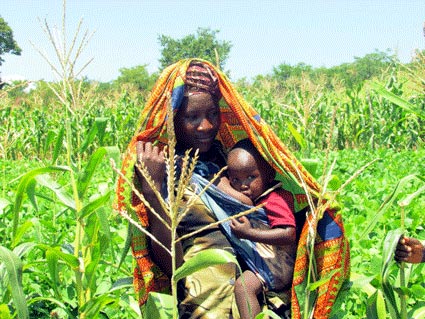 In February 2012 several CIMMYT staff working in
In February 2012 several CIMMYT staff working in 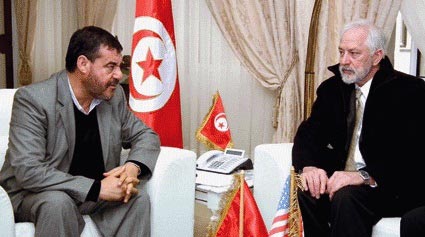
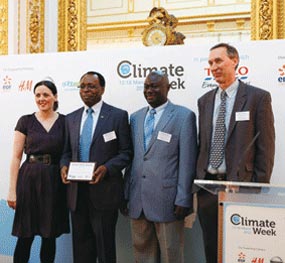 DTMA has been responsible for the development and dissemination of 34 new drought-tolerant maize varieties to farmers in 13 project countries—Angola, Benin, Ethiopia, Ghana, Kenya, Malawi, Mali, Mozambique, Nigeria, Tanzania, Uganda, Zambia, and Zimbabwe—between 2007 and 2011. An estimated two million smallholder farmers are already using the drought-tolerant maize varieties and have obtained higher yields, improved food security, and increased incomes.
DTMA has been responsible for the development and dissemination of 34 new drought-tolerant maize varieties to farmers in 13 project countries—Angola, Benin, Ethiopia, Ghana, Kenya, Malawi, Mali, Mozambique, Nigeria, Tanzania, Uganda, Zambia, and Zimbabwe—between 2007 and 2011. An estimated two million smallholder farmers are already using the drought-tolerant maize varieties and have obtained higher yields, improved food security, and increased incomes.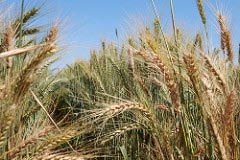 [MEXICO CITY] Mexican researchers have welcomed a breakthrough in imaging plant roots, saying it could help breeders develop new varieties of
[MEXICO CITY] Mexican researchers have welcomed a breakthrough in imaging plant roots, saying it could help breeders develop new varieties of  Meeting was held in the Indian holy city of Varanasi during 27 February to 01 March 2012. It was organized jointly by Banaras Hindu University (BHU), HarvestPlus, and CIMMYT to discuss wheat biofortification research outputs and future plans. The meeting was attended by about 40 scientists, including Hans Braun, Ravi Singh, Kevin Pixley, Velu Govindan, Etienne Duveiller, Arun Joshi, and Iván Ortiz-Monasterio from CIMMYT, along with participants from the Bill & Melinda Gates Foundation, HarvestPlus, the Indian national agricultural research system, the private sector, and more than 200 farmers from the eastern part of the state of Uttar Pradesh.
Meeting was held in the Indian holy city of Varanasi during 27 February to 01 March 2012. It was organized jointly by Banaras Hindu University (BHU), HarvestPlus, and CIMMYT to discuss wheat biofortification research outputs and future plans. The meeting was attended by about 40 scientists, including Hans Braun, Ravi Singh, Kevin Pixley, Velu Govindan, Etienne Duveiller, Arun Joshi, and Iván Ortiz-Monasterio from CIMMYT, along with participants from the Bill & Melinda Gates Foundation, HarvestPlus, the Indian national agricultural research system, the private sector, and more than 200 farmers from the eastern part of the state of Uttar Pradesh.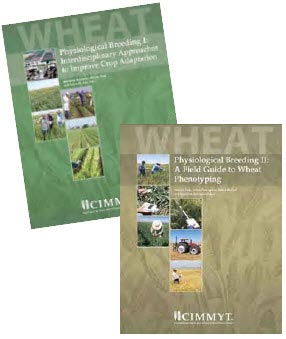 In 2001, CIMMYT published
In 2001, CIMMYT published 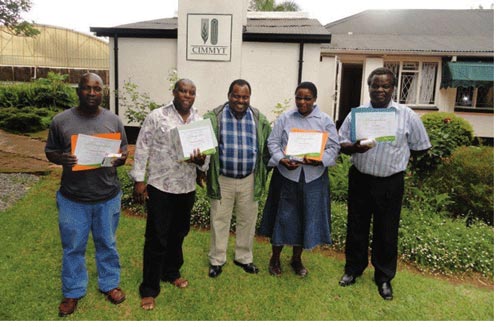 2012 is already proving to be big and eventful year for CIMMYT’s Southern Africa Regional Office, with half a dozen CIMMYT-Zimbabwe staff receiving honours for years of dedicated service to the organisation. At a luncheon event held on 02 March 2012 at the CIMMYT-Zimbabwe offices, Sebastian Mawere and John Chifamba each received awards for 25 years of service. The office also celebrated 20 years of dedicated service by Esau Tofa, 15 years by Nothando Moyo and Taksure Ndlovu, and 10 by Simbarashe Chisoro.
2012 is already proving to be big and eventful year for CIMMYT’s Southern Africa Regional Office, with half a dozen CIMMYT-Zimbabwe staff receiving honours for years of dedicated service to the organisation. At a luncheon event held on 02 March 2012 at the CIMMYT-Zimbabwe offices, Sebastian Mawere and John Chifamba each received awards for 25 years of service. The office also celebrated 20 years of dedicated service by Esau Tofa, 15 years by Nothando Moyo and Taksure Ndlovu, and 10 by Simbarashe Chisoro.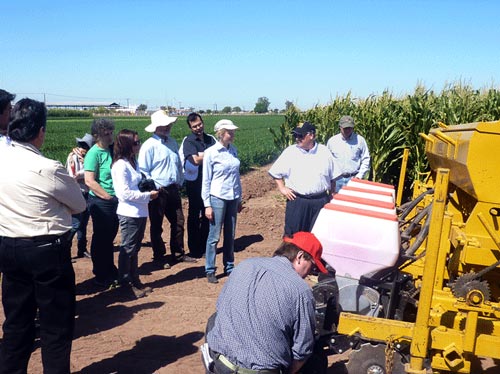 On 22 February 2012 we welcomed Howard G. Buffett and members of Sonora’s ‘Patronato’ (Patronato para la Investigación y Experimentación Agrícola del Estado de Sonora; PIEAES) to CIMMYT’s CENEB (Campo Experimental Norman E. Borlaug) station near Ciudad Obregón, Sonora, Mexico. The visit emphasized our joint concerns to improve food security and identified shared interests for improving opportunities for smallholder farmers and local entrepreneurs, and for widespread promotion of CA.
On 22 February 2012 we welcomed Howard G. Buffett and members of Sonora’s ‘Patronato’ (Patronato para la Investigación y Experimentación Agrícola del Estado de Sonora; PIEAES) to CIMMYT’s CENEB (Campo Experimental Norman E. Borlaug) station near Ciudad Obregón, Sonora, Mexico. The visit emphasized our joint concerns to improve food security and identified shared interests for improving opportunities for smallholder farmers and local entrepreneurs, and for widespread promotion of CA.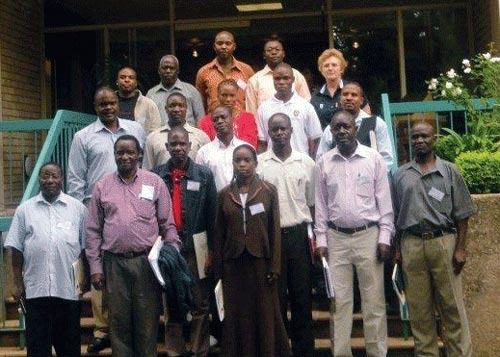
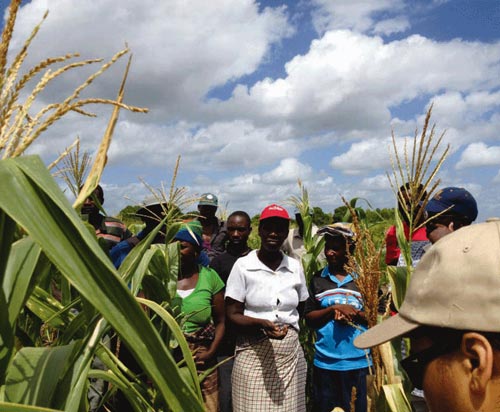 “Increasing Sustainable Agricultural Production in Mozambique through Drought Tolerant Maize and Conservation Agriculture” is a USAID-supported initiative bringing together two key components of CIMMYT’s work: Breeding for drought tolerance and sustainable land management to mitigate the effects of climate change.
“Increasing Sustainable Agricultural Production in Mozambique through Drought Tolerant Maize and Conservation Agriculture” is a USAID-supported initiative bringing together two key components of CIMMYT’s work: Breeding for drought tolerance and sustainable land management to mitigate the effects of climate change. As part of the
As part of the 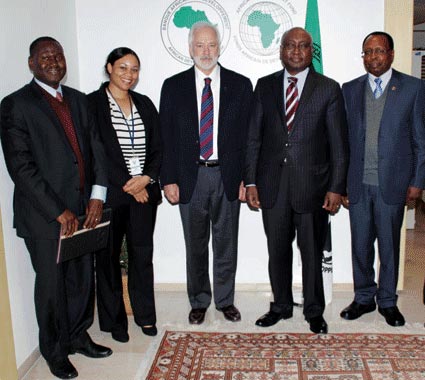 The group also discussed the MAIZE CRP and CIMMYT’s strong partnership with the International Institute of Tropical Agriculture (IITA). Institutional linkages such as these can be very beneficial to African smallholder farmers, as demonstrated by the major projects accomplished by CIMMYT’s Africa offices, such as Drought Tolerant Maize for Africa (DTMA), Sustainable Intensification of Maize- Legume Cropping Systems for Food Security in Eastern and Southern Africa (SIMLESA), Water Efficient Maize for Africa (WEMA), Insect Resistant Maize for Africa (IRMA), and Improved Maize for African Soils (IMAS). “CIMMYT has had an enormous impact on wheat in Africa. Most cultivars are CIMMYT derived and many wheat scientists from African NARS have been trained at CIMMYT,” said Ammar.
The group also discussed the MAIZE CRP and CIMMYT’s strong partnership with the International Institute of Tropical Agriculture (IITA). Institutional linkages such as these can be very beneficial to African smallholder farmers, as demonstrated by the major projects accomplished by CIMMYT’s Africa offices, such as Drought Tolerant Maize for Africa (DTMA), Sustainable Intensification of Maize- Legume Cropping Systems for Food Security in Eastern and Southern Africa (SIMLESA), Water Efficient Maize for Africa (WEMA), Insect Resistant Maize for Africa (IRMA), and Improved Maize for African Soils (IMAS). “CIMMYT has had an enormous impact on wheat in Africa. Most cultivars are CIMMYT derived and many wheat scientists from African NARS have been trained at CIMMYT,” said Ammar.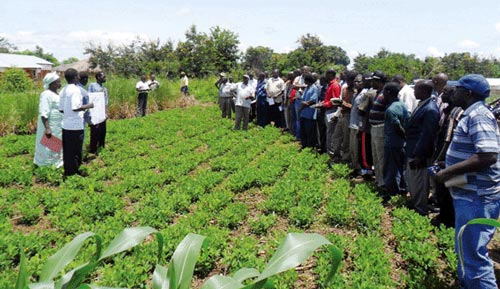 Since 2005, farmers, extension officers, and researchers have joined forces in starting a revolution from traditional farming systems in Malawi to locally adapted CA systems. The number of farmers practicing CA in the TLC communities of Central Malawi has grown from the initial 12 in 2005 to over 30,000 in 2012. This extension of CA was largely due to the development of an innovation network with different actors: Researchers assured training and quality implementation of the new technologies in target communities; the network facilitated participatory interaction and dialogue with farmers; and farmers raised social capital, subsequently boosting interest in the project within their own communities and the surrounding areas. These successful results enabled TLC and other partners to attract further funding and they linked farmers with input suppliers and a soft loan program for herbicides and improved seed. Farmers can currently access the input loan at seeding and pay back the amount for both inputs at harvest. Linking farmers to input markets was a major success, but more work needs to be done to also develop output markets for increased production from CA fields.
Since 2005, farmers, extension officers, and researchers have joined forces in starting a revolution from traditional farming systems in Malawi to locally adapted CA systems. The number of farmers practicing CA in the TLC communities of Central Malawi has grown from the initial 12 in 2005 to over 30,000 in 2012. This extension of CA was largely due to the development of an innovation network with different actors: Researchers assured training and quality implementation of the new technologies in target communities; the network facilitated participatory interaction and dialogue with farmers; and farmers raised social capital, subsequently boosting interest in the project within their own communities and the surrounding areas. These successful results enabled TLC and other partners to attract further funding and they linked farmers with input suppliers and a soft loan program for herbicides and improved seed. Farmers can currently access the input loan at seeding and pay back the amount for both inputs at harvest. Linking farmers to input markets was a major success, but more work needs to be done to also develop output markets for increased production from CA fields.